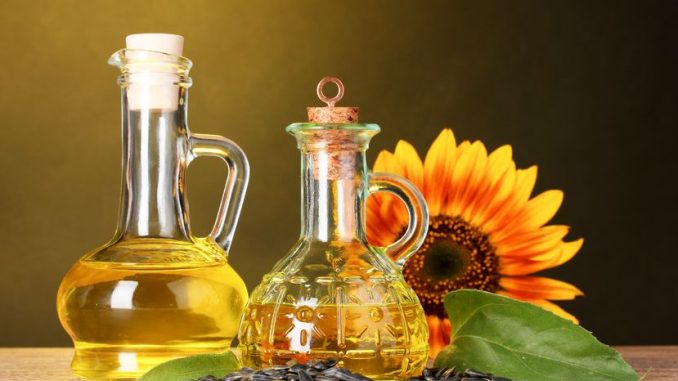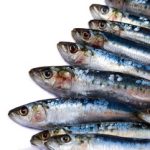
The polyunsaturated fatty acids which are abbreviated to PUFAs, are lipids. They all have at least two double bonds present.
Those of animal origin are subdivided into families based on their formation from particular types of precursors.
Each family is defined by their double bond content in the molecule. One key feature of PUFAs found in nature is they all have a cis configuration and not a trans one. Typically they are confined to the sn-2 position on phospholipids and most often between 18 and 20 carbons long.
They all have a carboxylate anion at one end and the carbons are counted from the carboxylate carbon.
A MUFA is a monounsaturated fatty acid and has just one double bond usually positioned at the sn-1 position of the chain.
In some cases, there may be an acetylenic bond which implies one or more triple carbon bonds.
The MUFAs
About 100 MUFAs have been identified and most are really rare in nature. The most prevalent and industrially also one of the most important oils is oleic acid. It is the most common unsaturated fat in the human diet. Most of this is found in extra virgin olive oil which contains about 70 grams in 100 grams of oil.
The PUFAs
The polyunsaturated fatty acids (PUFAs) are often referred to by particular naming such as omega-3 and omega-6 (or n-3 and n-6) fatty acids. It means the first double bond begins either at the 3rd carbon or the 6th carbon from the methyl end and not the carboxylate carbon end which is confusing for many. We tend to discuss omega-3 fatty acids more often in nutrition than the n-6 or omega-6 types.
Our diet includes all those fatty acids which contain long-chain PUFAs from the n-3 and n-6 families.
If you see the format, 18:4 ω-3 it usually means it is a fatty acid with 18 carbon atoms. There are 4 double bonds. The first double bond starts at the third carbon atom from the methyl end.
The major dietary ones are:-
n-6 PUFAS like linoleic (18:2 ω-6), gamma-linolenic acid (18:3 ω-6) and arachidonic acid (20:4 ω-6).
n-3 PUFAs are alpha-linoleic acid (ALA) (18:3 ω-3), eicosapentaenoic acid (EPA) (20:5 ω-3) and docosahexaenoic acid (DHA) (22:6 ω-3). It is possible to find docosapentaenoic acid.
The PUFAs, linoleic acis, alpha-linolenic acid (ALA) and gamma-linolenic acid are often found in very large amounts in plant foods especially oils from maize, corn, flax, chia, sunflower seeds, soybean, canola and linseed.
The Nutritional Benefits Of PUFAs
Omega-3s are always the ones that most people refer to when discussing nutrition. It does seem though that the individual omega-3 fatty acids all have slightly different benefits but we tend to ingest them as a mixture which means we benefit from their cumulative effects. The reason they so beneficial comes from the fact that a number of them are integral components of cell membrane phospholipids. Without them we would not have cells for a start. A number are also precursors for hormone-like molecules which act as mediators in inflammation and these are known as the eicosanoids.
Polyunsaturated fats are a form of dietary fat. With MUFAs, they are healthy fats too ! Consumming these types of fats in place of saturated and trans fats highly beneficial. Such fats are associated with an increased risk of heart disease amongst other health issues.
There is a great deal of research out there which has shown that the long chain PUFAs can regulate cell metabolism even at the nucleus level. Apparently they can alter gen regulation by their presence by serving as important modulators on a range of transcription factors involved in protein synthesis.
We cannot make essential fatty acids so we have to consume all of them in food.
The omega-3 fatty acids are beneficial for the heart and good cardiovascular function in many ways. They offer the following:
- Reduce blood pressure slightly
- Reduce the formation of plaque in arteries
- Reduce the risk of developing arrhythmia which is an irregular heart beat
- Reduce the formation of harmful triglycerides.
The omega-6 fatty acids are useful in other ways:
- Controlling blood sugar
- Reducing the risk of diabetes
- Lowering blood pressure
Some web-sites advocate cutting out PUFAs altogether from the diet but that is misleading for many people. Generally though, the biggest issue is overindulging on PUFAs. All nutritionists would recommend having PUFAs in moderation.
Alpha-linolenic acid (ALA) is worth paying attention to because it is the precusor for making eicosanoids in the body. These products of this PUFA are regulators of many biochemical processes including inflammation. This particular acid is a precursor of eicosapentaenoic acid (EPA) and docosahexaenoic acid (DHA).


Leave a Reply